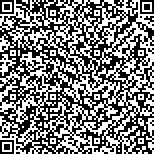周雯雯,王琳,李鑫河,等.脐带间充质干细胞分泌的外泌体对骨性关节炎模型大鼠的镇痛作用[J].中华物理医学与康复杂志,2022,44(3):193-198
扫码阅读全文

|
| 脐带间充质干细胞分泌的外泌体对骨性关节炎模型大鼠的镇痛作用 |
|
| |
| DOI:10.3760/cma.j.issn.0254-1424.2022.03.001 |
| 中文关键词: 外泌体 转录激活因子 生长相关蛋白 软骨修复 神经病理性疼痛 |
| 英文关键词: Exosomes Activating transcription factors Growth associated protein Cartilage repair Neuropathic pain |
| 基金项目:山东省自然科学基金(ZR2018MH031) |
|
| 摘要点击次数: 5912 |
| 全文下载次数: 7057 |
| 中文摘要: |
| 目的 观察脐带间充质干细胞分泌的外泌体对骨性关节炎模型大鼠疼痛行为、软骨修复及背根神经节(DRG)中转录激活因子3(ATF-3)及生长相关蛋白43(GAP-43)表达的影响,并探讨外泌体治疗关节炎疼痛的可能机制。 方法 采用随机数字表法将54只雄性SD大鼠分为假手术组、模型组和外泌体组,每组18只,除假手术组外,其余2组均于左后肢膝关节腔注射4 mg/50 μl单碘乙酸钠(MIA)建立疼痛模型,假手术组大鼠关节腔注射50 μl生理盐水作为对照。造模14天后,假手术组和模型组大鼠左后肢膝关节腔注射50 μl生理盐水,外泌体组大鼠注射50 μl外泌体。于造模前1天、造模后第7、14天及给药后第7、14、28天对各组大鼠机械痛阈和热痛阈进行测定;于测试后取出相应时间点DRG,采用免疫蛋白印迹法检测ATF-3及GAP-43表达情况;并取出相应时间点各组大鼠膝关节,采用苏木素伊红(HE)染色检测软骨修复情况。 结果 与模型组比较,外泌体组在给药后第7天时,机械痛阈值及热痛阈值均明显增加,直到给药后第28天时差异均具有统计学意义(P<0.05);DRG水平ATF-3蛋白表达显著降低(P<0.01),GAP-43蛋白表达显著增加(P<0.001);膝关节水平使用国际骨关节炎研究所(OARSI)软骨评分,在外泌体给药28天后差异具有统计学意义(P<0.01)。 结论 外泌体可减轻MIA诱导的关节炎疼痛,其镇痛机制可能与减轻神经损伤、促进神经及软骨修复有关,且神经修复早于软骨修复。 |
| 英文摘要: |
| Objective To observe any effect of exosomes derived from umbilical cord mesenchymal stem cells on pain, cartilage repair and the expression of transcriptional activator 3 (ATF-3) and growth related protein 43 (GAP-43) in the dorsal root ganglia (DRG), as well as to explore the mechanism of their relieving pain. Methods Fifty-four male Sprague-Dawley rats were randomly divided into a sham-operation group, a monoiodoacetate group and an exosome group, each of 18. The knee cavities of the left hind limbs of all of the rats except those in the sham-operation group were injected with 50μl of monoiodoacetate to establish an arthritis pain model. The sham-operation group received only 50μl of saline solution as controls. Two weeks after the modelling, the knee joint cavities of the exosome group were injected with 50μl of exosomes, while the other two groups were injected with 50μl of normal saline. The rats′ mechanical and thermal pain thresholds were measured 1 day before the modeling, 7 and 14 days after the monoiodoacetate injection, as well as 7, 14 and 28 days after the exosome injection. Western blotting was used to detect the expression of ATF-3 and GAP-43 in the rats′ DRG, while hematoxylin and eosin staining was used to detect any cartilage repair. Results Compared with the monoiodoacetate group, the latency of the mechanical and thermal pain thresholds had increased significantly in the exosome group 7 days after the exosome injection. The difference remained significant until the 28th day after the injection. The expression of ATF-3 protein decreased significantly and that of the GAP-43 protein increased significantly. Significant differences were observed in the average Osteoarthritis Research Society International (OARSI) knee cartilage score. Conclusions Exosomes can alleviate the pain induced by monoiodoacetate adjuvant. The analgesic mechanism may be related to reducing nerve injury and promoting nerve and cartilage repair, with the nerve repair earlier than cartilage repair. |
|
查看全文
查看/发表评论 下载PDF阅读器 |
| 关闭 |